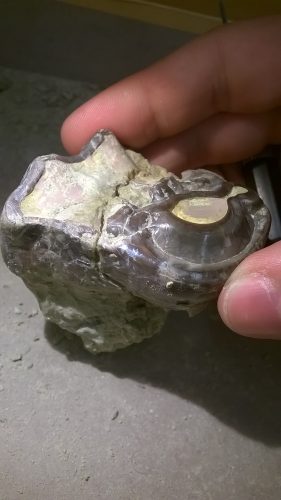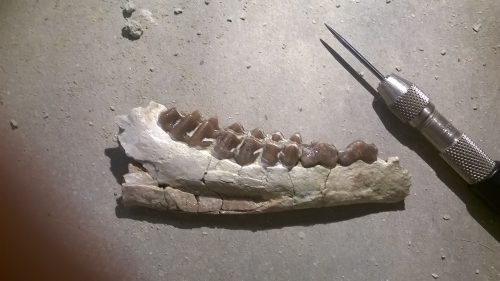
Guess who’s back for a second round with the PCP-PIRE project! Yes, this time I find myself here in scenic Gainesville, FL at the Florida Museum of Natural History to experience the next step in the fossil specimens’ journey from the field to becoming integral parts of the Panamanian Collections. So far I have spent a good deal of my time divided between three primary tasks: my research projects, fossil preparation, and cataloging of the specimens amongst their peers in the endless sea of cabinets they’re housed in. My first days were dedicated to the cleaning of an assortment of artiodactyl, protoceratid, and horse mandibles, as well as a titanothere tooth.
The cleaning and gluing of such specimens is meticulous work and requires a certain degree of patience and gentleness to prevent any further breaking or scratching, as I have had the pleasure of learned through experience. Though slow work, and slightly dizzying from the acetone, at the end of the day it’s well worth the trouble, and you are presented with a beautiful and clean fossil.

In addition to my other duties I am presently assisting Nathan Jud and Bruce MacFadden with a Rare Earth Element (REE) analysis of vertebrates, invertebrates, and fossil woods collected from Lago Alajuela in an attempt to determine if the silicified (SiO2 composed) woods do indeed carry the same REE signature as the fauna collected with either carbonate or calcium phosphate composition. This is significant as very little work has been done previously for REEs on silicic material, let alone silicified wood. The first step in achieving this was to drill each of the specimens gathered and collect approximately 0.1 grams of powdered sample. Though the drill worked its way through the turtle carapace, teeth, and oyster shells like a carbide knife through butter, the woods put up a surprising amount of resistance. The silicified woods required special drill bits to acquire the necessary powers, but 7 diamond tipped drill bits and several drilled fingers later victory was mine. Next up will be to digest the samples using strong acid, and process the samples and observe the results.

That’s all for now, tune in next time for the results!